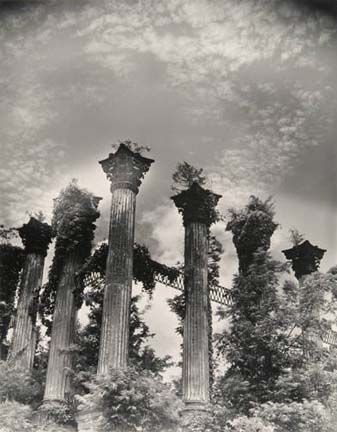About the Photographer
Laughlin, Clarence John
American, 1905-1985
Clarence John Laughlin was born in Lake Charles, Louisiana, in 1905. Five years later he moved to New Orleans, where he grew up and where he would spend most of his life. Laughlin dropped out of high school at a young age, although he maintained a deep interest in literature and aspired to be a writer. During the Great Depression, at the age of twenty-five, he began to pursue photography and taught himself how to use a camera and darkroom equipment. Initially he worked as a freelance photographer, before accepting a position at Vogue magazine and later with the US Army Corps of Engineers. After World War II, Laughlin earned a living as an architectural photographer while mostly devoting himself to his own interests in photography. Greatly influenced by Eugène Atget, Laughlin became one of the first American surrealist photographers.
Photographing in Louisiana's cemeteries and decaying plantations, Laughlin depicted a landscape of ruins while using double exposures, mirrors, and costumed figures to create dream-like scenarios and enigmatic images. In his words, "I have tried to create a mythology from our contemporary world." His work dealt symbolically with human desires, compulsions, and fears. In this respect, he aimed to show links between inner consciousness and material reality. At the same time, however, he was deeply engaged with his surrounding environment, and his work responds at a deep level to the environs of Louisiana and New Orleans, conjuring a gothic sensibility and nostalgia for the old South. Laughlin emphasized a connection between the visual and verbal in his work, and he accompanied each image with a poetic caption. These captions reflect his abiding literary interests and his belief that the written word augments the visual image. For Laughlin, the written descriptions suggested the intent behind the photograph, but more importantly they introduced the image into a wider realm of ideas.
Laughlin was an active photographer until 1967 and he continued to write and lecture for the last two decades of his life. When he died in 1985, he left behind 17,000 negatives. His best known monograph, Ghosts Along the Mississippi: The Magic of the Old Houses of Louisiana, was first published in 1948 and reissued in 1988.


